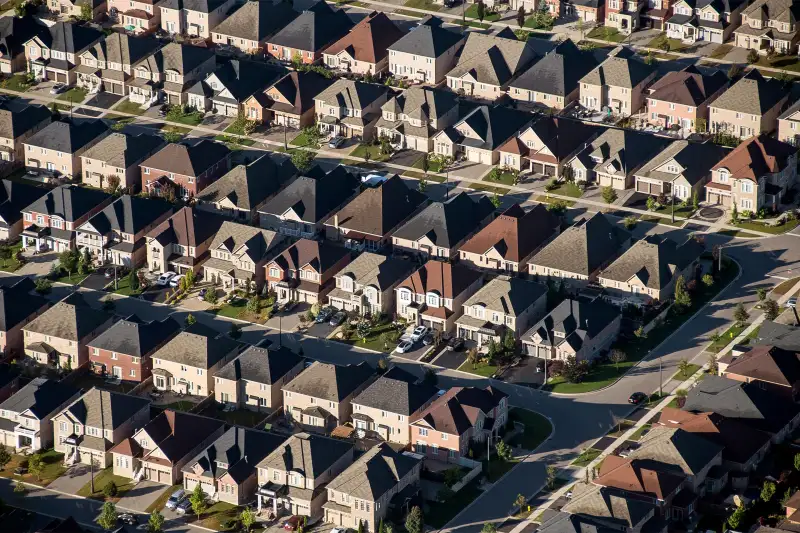A ‘Middle Finger’ to Struggling Families: How a New Fee Is About to Make Refinancing Your Mortgage a Lot More Expensive

Refinancing a mortgage is about to get more expensive — potentially reshaping the math for millions of borrowers looking for savings amid a historic boom for home loans.
On Wednesday night, mortgage purchasers Fannie Mae and Freddie Mac, informed lenders that, starting in about two weeks, they will be adding a 0.5% fee when buying refinance mortgages. Known as an Adverse Market Refinance Fee, the charge is meant to offset the risks and expenses the firms say they have taken on due to the coronavirus pandemic. The costs of the new will surely be passed onto consumers, either in the form of higher closing costs or higher mortgage rates, experts say.
Former Federal Housing Administration commissioner David H. Stevens, summed up how people are feeling about the change in a tweet Wednesday night, writing:
In the midst of a pandemic where some families might be provided cushion by simply refinancing their mortgage to a lower rate, FHFA and the GSEs are essentially providing them the middle finger in order to protect billionaire bond investors by adding a 50bp fee on refis. @FHFA
— David H Stevens (@davidhstevens) August 13, 2020
He directed the tweet at the Federal Housing Finance Agency, which regulates the government-sponsored entities. Fannie and Freddie guarantee trillions in mortgages for American homeowners. While both are overseen by the federal government, officials have been looking for ways to restore them to private ownership. (Fannie and Freddie did not comment on Stevens' tweet.)
In a statement to Money, a Fannie Mae spokesperson wrote: "It is difficult to assess or predict the impact of this unprecedented event on the company’s business, financial results, or financial condition. The fee is designed to ensure we are able to maintain market stability during a time of economic uncertainty."
In his own scathing statement, Mortgage Bankers Association CEO Bob Broeksmit estimated the new fee means the average consumer will be paying $1,400 extra. (Fannie and Freddie estimate the new fee will cost borrowers about 0.1% annually—or $100 per $100,000 borrowed—if lenders pass on the full cost.) Already, the average closing costs to refinance are about $5,000.
The charge will take effect on September 1, meaning even refinance applications already underway are likely to be impacted. According to mortgage software company Ellie Mae, the average time to close a refinance was 48 days in June.
(Update: On August 25, the FHFA announced that the Adverse Market Refinance Fee will not be implemented until December 1 and that refinance loans with balances less than $125,000 will be exempted. Broeksmit applauded the news, saying in a statement, "Extending the effective date will permit lenders to close refinance loans that are in their pipelines and honor the rate lock commitments they made to their borrowers.")
“My sense is if you look at where rates were in March—3.5% compared to under 3% today—even after the fee, you will see a lot of borrowers saving money by refinancing,” said Karan Kaul, a senior research specializing in housing finances at the Urban Institute, in an interview. “Of course, the point is they will save less.”
Homeowners who still want to refinance will have little choice but to pay. Factors like how long you plan to stay in your home and your current mortgage rate, will determine whether you are better off paying the fees upfront or paying over the life of your mortgage via higher rates or a lender credit. (If you are given a choice.) Borrowers with jumbo loans, which Fannie and Freddie can’t purchase, will not be hit with this fee. But jumbo loans have already become harder to get due to the pandemic.
The new fee comes amid a refi boom, set off by record low interest rates and the fact that, with COVID disrupting the economy, many Americans are looking for new ways to save. Refinance requests made up nearly two-thirds of total mortgage applications last week and have posted 12 consecutive weeks of year-over-year growth. At the current average mortgage rate of 2.96%, roughly another 18 million could save money by refinancing, according to real estate data firm Black Knight.
Fannie and Freddie do not lend to consumers. Rather, they buy loans from lenders, package them and then sell the bundles — known as mortgage backed securities — to investors, guaranteeing the loans in the event of a default. The biggest buyer is the U.S. Federal Reserve which has been purchasing $40 billion in MBS per month as part of its efforts to support the economy. “This action raises those costs and undermines the Federal Reserve’s policy,” noted Broeksmit.
So why’d Fannie and Freddie do it? “That’s the million dollar question,” says Kaul, who learned this morning that the interest rate on his own refi will be going up due to the new fee. “This is perplexing. The pandemic has been going on since March.”
More from Money:
Is Now a Good Time to Refinance My Mortgage? A Decision-Making Guide
Why a Rate Lock Makes Sense Right Now, Even with Mortgage Rates Falling
